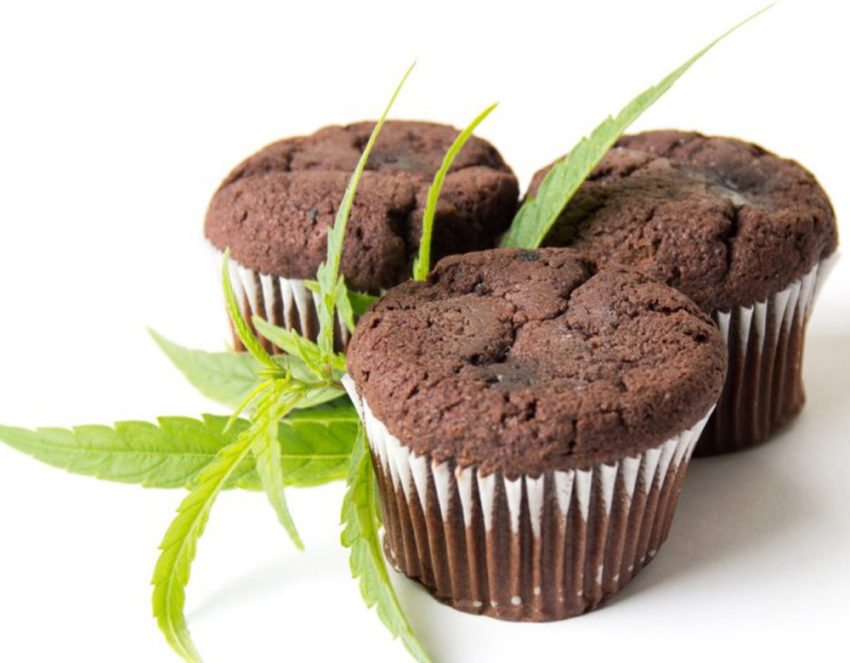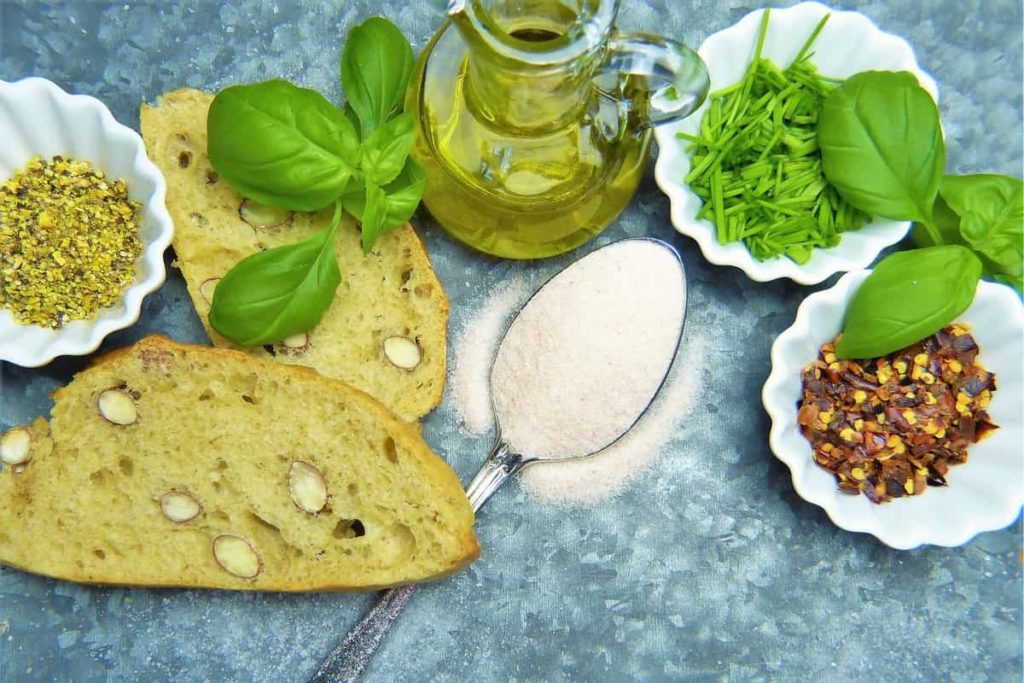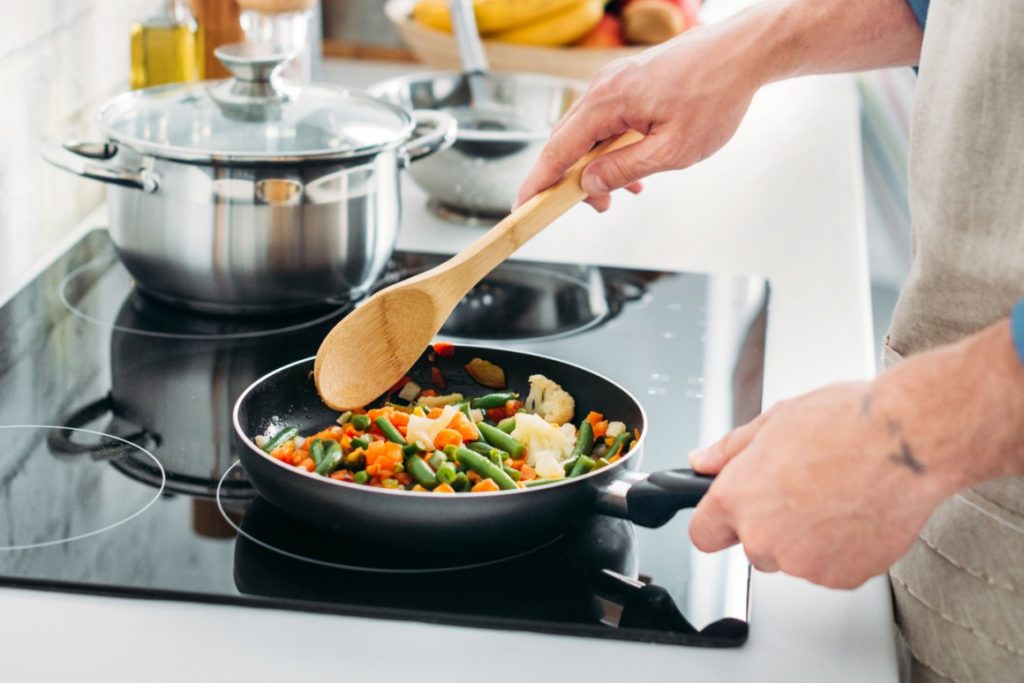Ask virtually anyone: though they may not always enjoy the time involved in the preparation, everyone enjoys home-cooked meals. Several reasons exist but perhaps the most common one is health: culinary dishes prepared naturally – and with thoughtfulness and care – will always win out over-processed meals or fast food.
As you know, with rising concerns about obesity in America, an increasing number of people have forwarded interest in home-cooked meals and recipes.
And one of the best ways to enhance an already healthy dish is to incorporate naturally sourced cannabidiol, or more commonly known as CBD.
Thanks to the current robust legal environment – and still increasing in magnitude – for cannabis-based products has surged in popularity.
A major catalyst for this dynamic is the diverse platforms for cannabidiol. No longer limited to analog smoking, cannabis can now be consumed or enjoyed via oils, tinctures, edibles, and ointments.
Best of all, CBD doesn’t contain any tetrahydrocannabinol or THC. This is the controversial cannabinoid that sparks the high in marijuana. Although CBD and THC are identical in terms of molecular structure, the individual molecules are arranged differently.
It’s this distinction that separates the two cannabinoids, allowing CBD users to benefit from the cannabis plant while staying free from negative psychoactive effects.
Frankly, there’s no better way to initiate yourself into the world of “botanicals” than through edibles or incorporating these materials into your favorite dishes or beverages. Under such methodologies, you can consume cannabidiol discreetly. Furthermore, you can share the holistic benefits of CBD with botanically curious family and friends.
That said, you may have one pressing thought:
That’s Great and All but Is This Legal?

Thanks to the groundbreaking 2018 farm bill, the answer is a resounding yes! While the federal government classifies marijuana as a Schedule I drug – due in large part because of strong THC content – industrial hemp and hemp-derived are completely different animals.
While the nuances are incredibly granular, the farm bill has set the tone for the adult liberties that we advantage today. A rare demonstration of bipartisan support, both Republicans and Democrats set aside their often vitriolic differences to push the new proposal forward. With President Trump signing the bill into law, suddenly, the dark cloud hanging over cannabis in the U.S. got a little brighter.
For the cannabidiol market, the farm bill represented a veritable catalytic agent. Typically, it is sourced from industrial hemp. With the new law legalizing hemp on the federal level, its derivatives are likewise legal – so long as the cannabis-based material contains less than 0.3% THC content.
Thus, these products are completely legal in the U.S. (although specific jurisdictions may have varying laws – check with a local attorney for details). And that means you can buy cannabidiol oils, powders and other edibles for use in the kitchen.
What You’ll Need to Start Cooking with CBD

Before you start on your journey with culinary cannabidiol, you’ll need to understand some of the basic nuances with the core ingredient. Although by no means a comprehensive discussion, the below should serve as a basic guideline to help you forge your path.
For the purposes of cooking with CBD, most enthusiasts will elect three cannabis categories: hemp seed oil and full-spectrum CBD. Although all three are rooted in the cannabis Sativa plant, they have certain nuances and granularity that cater to specific preferences or needs.
First, let’s discuss hemp seed oil. As the name suggests, this ingredient is derived from hemp seeds. Due to its distinct processing called “cold pressing,” hemp seed oil products typically contain no cannabinoids. Instead, you receive the pureness and organic integrity of the seed oil. Thus, the hemp seed oil is often found in food or skincare products.
Second, we have CBD isolate. Again, the name of the product category is a dead giveaway, referring to the purity of cannabidiol. CBD isolates are especially useful for conditions that benefit from pure CBD and nothing else. Also, the isolate format has the benefit of likely not pinging sensitive drug tests as THC – not even a trace amount – is found here.
Last but not least is full-spectrum CBD. This is cannabidiol that features a range of other cannabinoids; hence the name full spectrum. Often used as a holistic therapy, this iteration is beneficial for enthusiasts who desire the so-called entourage effect. A phenomenon where various cannabinoids work in conjunction with each other, full-spectrum CBD truly delivers the most bang for the buck.
Pros and Cons of Cooking with CBD Iterations

Undoubtedly, cooking with it delivers a fresh breath of air to an endeavor that some folks consider a chore. Additionally, cannabis-based products may impart health benefits from your culinary dishes that previously didn’t exist. That said, not all botanical ingredients lever the same impact.
This is both the beauty and the challenge behind cooking. Invariably, it is a learning experience that involves much tinkering and modulation to get it just right…for you (and your family and guests). The reality is that there are no hard and fast rules about cooking with it – what appeals to some folks may not attract others.
With this in mind, we’ll take a quick look at the pros and cons of the three most popular cannabis ingredients for cooking.
First, many newcomers regard hemp seed oil as the ideal platform for cannabis cooking. Technically, the organic structure of hemp seed oil facilitates incorporation into your favorite dishes or even beverages. Better yet, you can indulge in hemp seed oil as it does not contain any other cannabinoids – you can’t get pinged on a drug test for a compound you didn’t consume.
However, the key drawback of the hemp seed oil is that many of these products retain cannabis’s native pungent smell. While it may not affect certain individuals, it’s not to most people’s taste. Further, hemp seed oil, while considered a “superfood,” doesn’t have the benefits of cannabidiol.
That brings us to our discussion about CBD isolate. As the purest form of it, the isolate format has a key advantage over other forms of cannabis: it doesn’t impart a flavor or aroma impact. Plus, CBD isolate borrows from the non-THC content of hemp seed oil products.
However, even pure cannabidiol has its drawbacks. Primarily, CBD isolates, despite it typically being lower priced than its full spectrum counterpart, doesn’t offer the greatest value. Because it doesn’t include other cannabinoids, you essentially pay for a muted version of it. Also, the highly involved processing with CBD isolate may not be the most healthy alternative for consumers.
By logical deduction, full-spectrum CBD provides the greatest value due to the entourage effect. Yet because this iteration carries trace amounts of THC, basic etiquette dictates that you inform your guests beforehand about the ingredient.
Also, full-spectrum has the same drawback with hemp seed oil: that familiar but not necessarily pleasant odor of the cannabis Sativa plant.
Helpful Tips for Cooking

Here’s the dirty little secret about cooking with it: although intrinsically rewarding, it’s also a lot of tough work. If you’re not prepared to roll up your sleeves and get some things wrong along the way, this journey may not be right for you.
That said, we can all learn from the mistakes of those who came before us. Below are a few tips to help you stay on the straight and narrow:
● When using CBD, incorporate fat or oil – due to its structure, it binds effortlessly with fat. Thus, cooking with materials like butter or coconut oil binds CBD and distributes its health effects across a wider surface area.
● Avoid excessive heat – as with other platforms – such as vaping or dabbing – burning your materials too strongly will destroy the associated benefits of the cannabis plant. Thus, many people who principally seek therapeutic effects will apply CBD oils topically on food, rather than as a cooking agent.
● Mask CBD flavor profiles – by itself, full-spectrum or hemp seed oil levers a pungent smell or a bitter earthy flavor. One trick to avoid this experience is to mask the CBD with foods that “correspond” with the cannabis flavor profile, such as soups or pasta sauces.
● Measure your dosage – as mentioned before, cannabis consumption doesn’t feature hard and fast rules. In fact, it may impact individuals quite differently from other folks. To avoid any unforeseen issues, make sure to start your dosage with small levels and work your way up to your ideal preference.
Now that you have the lowdown on cooking with CBD it is time to pick up some CBD products and make some culinary masterpieces! The team at the Nug Republic can’t wait for that dinner invite!












